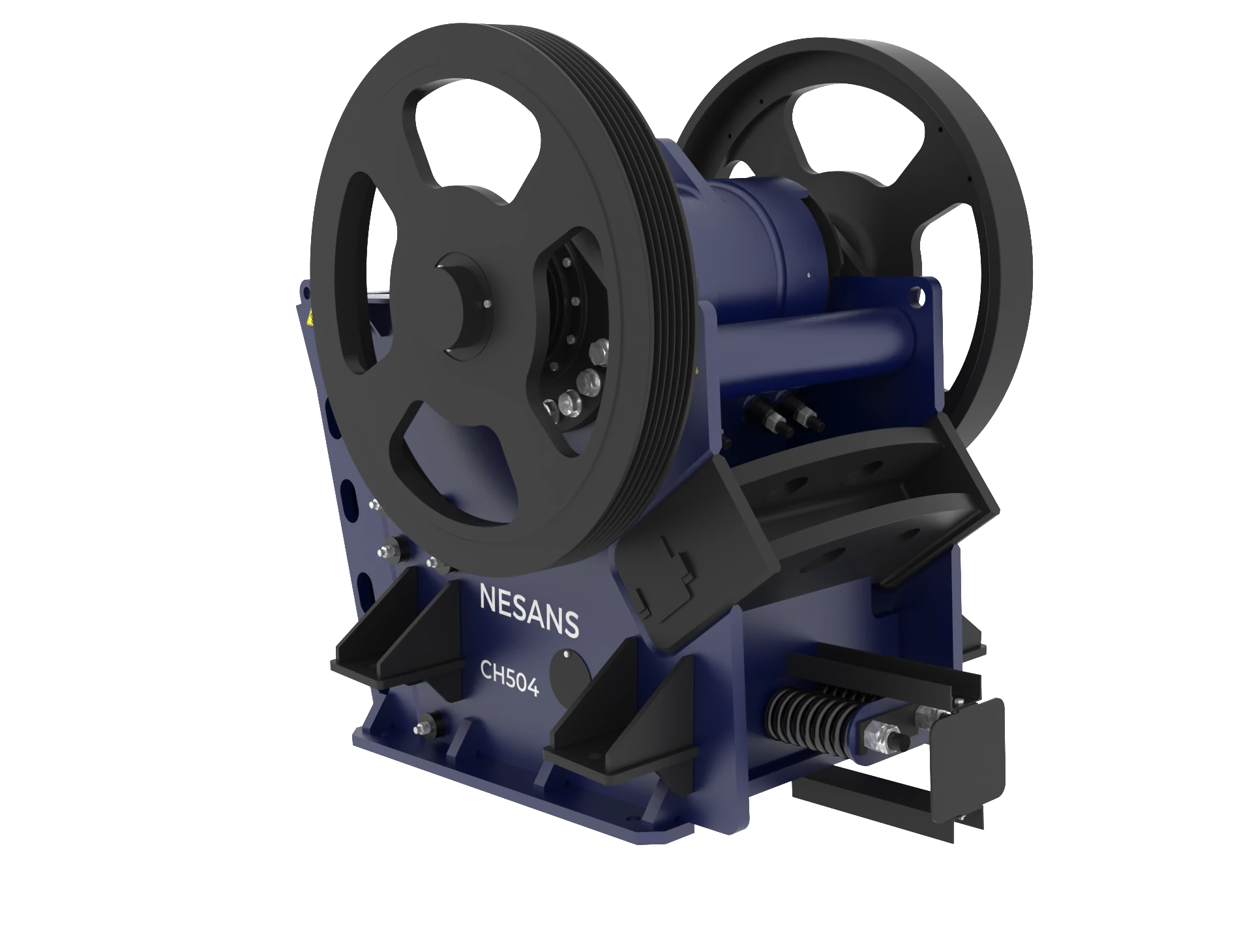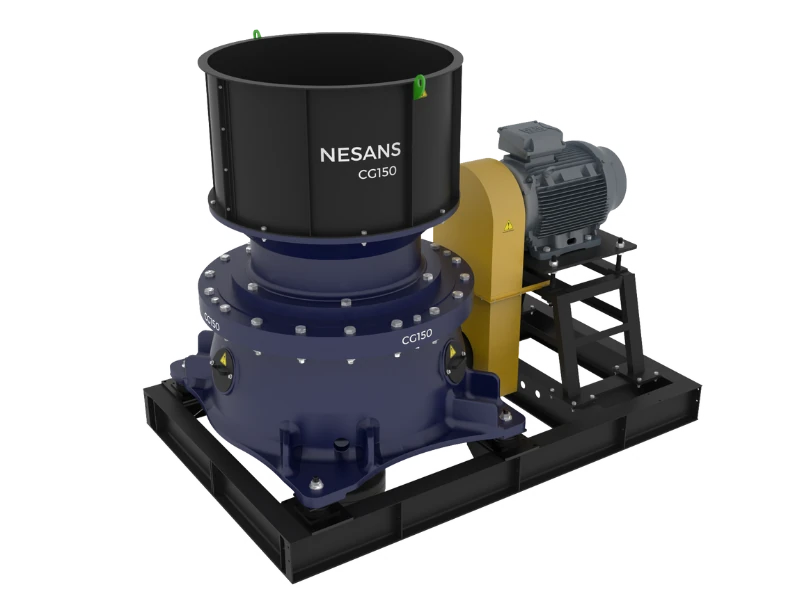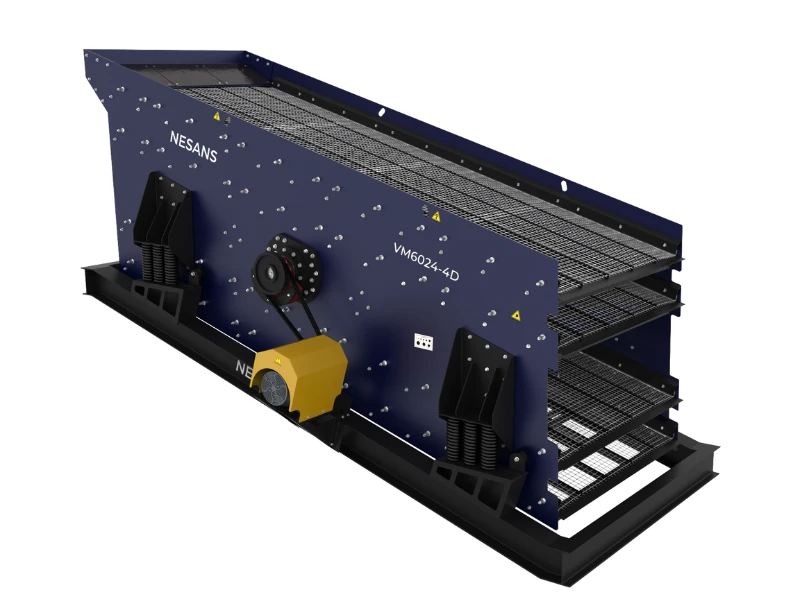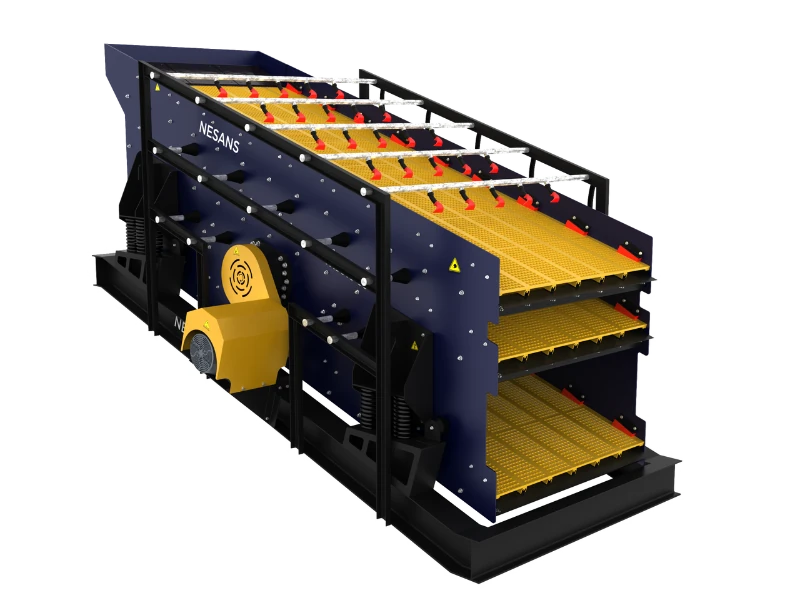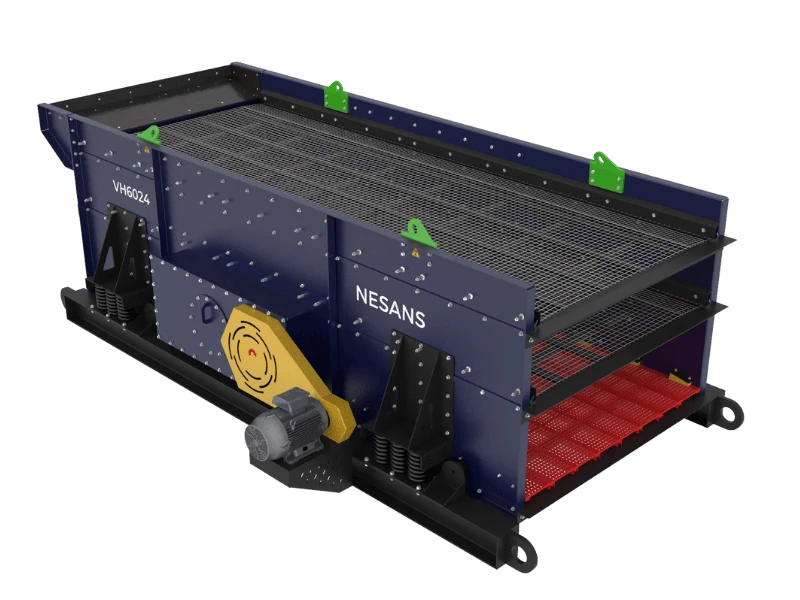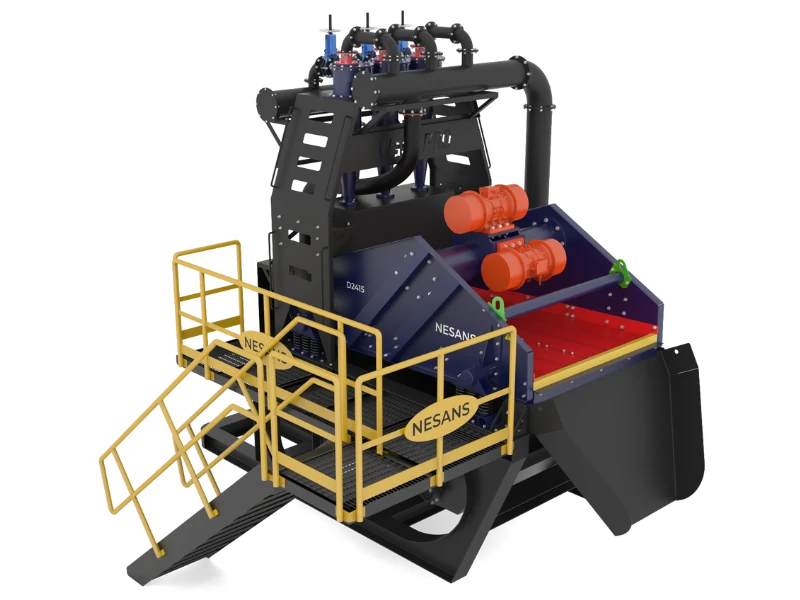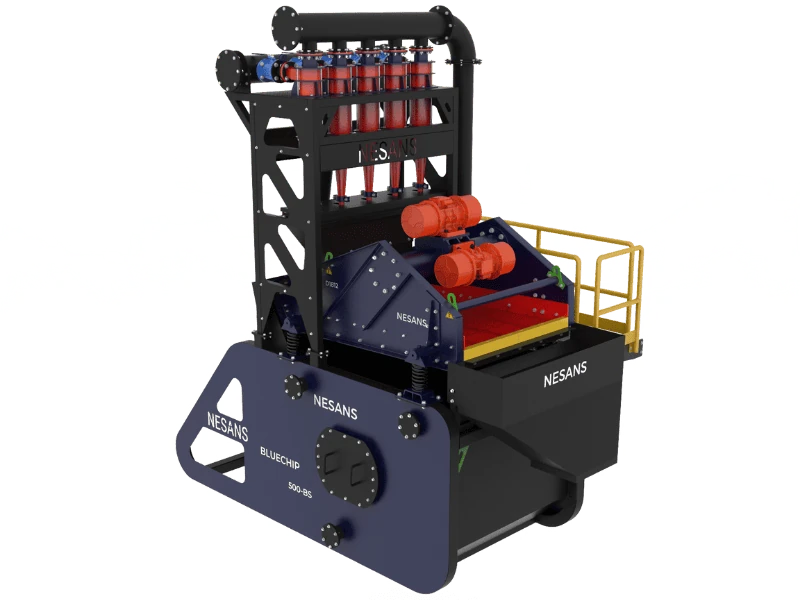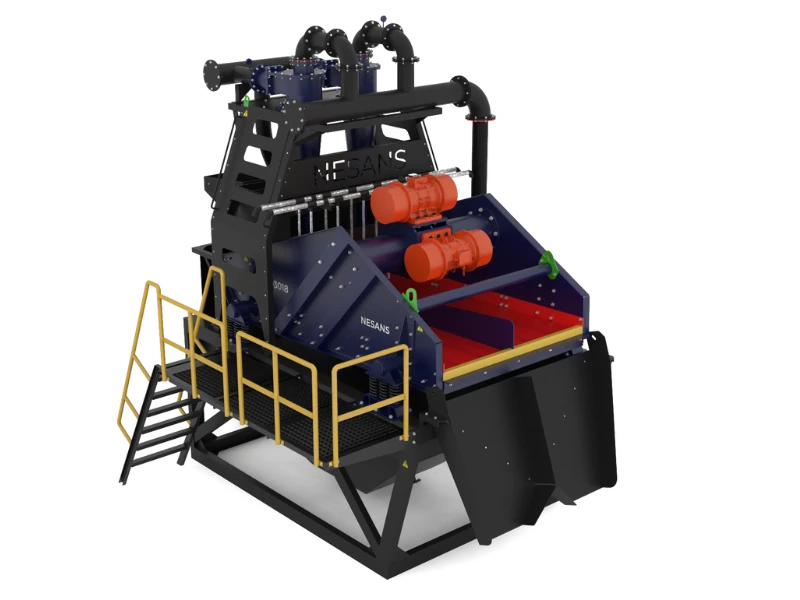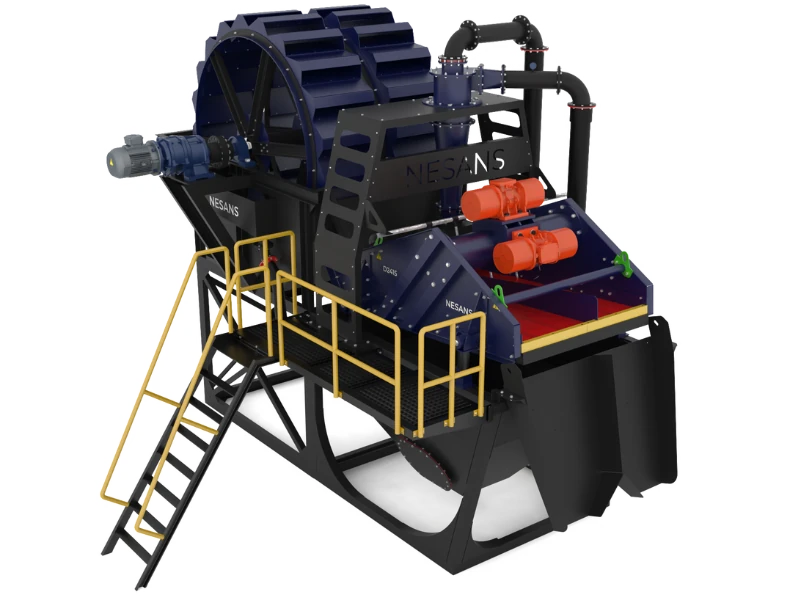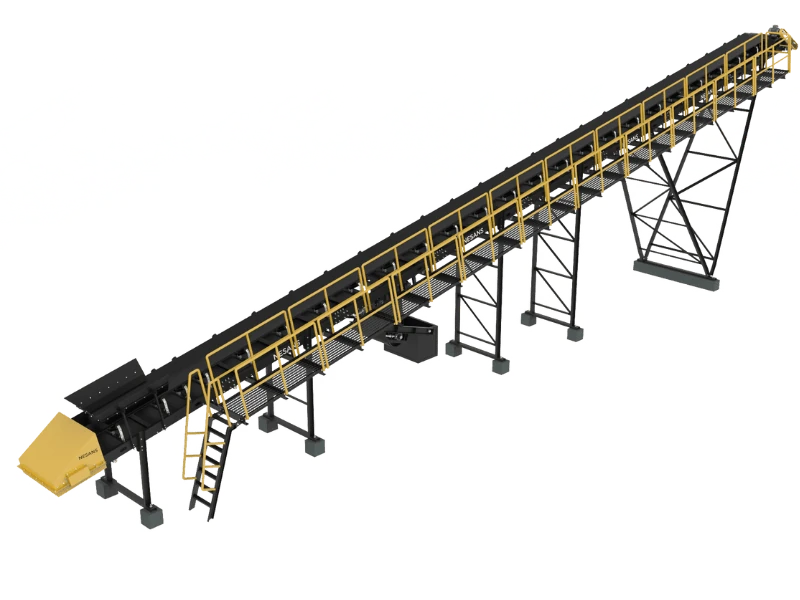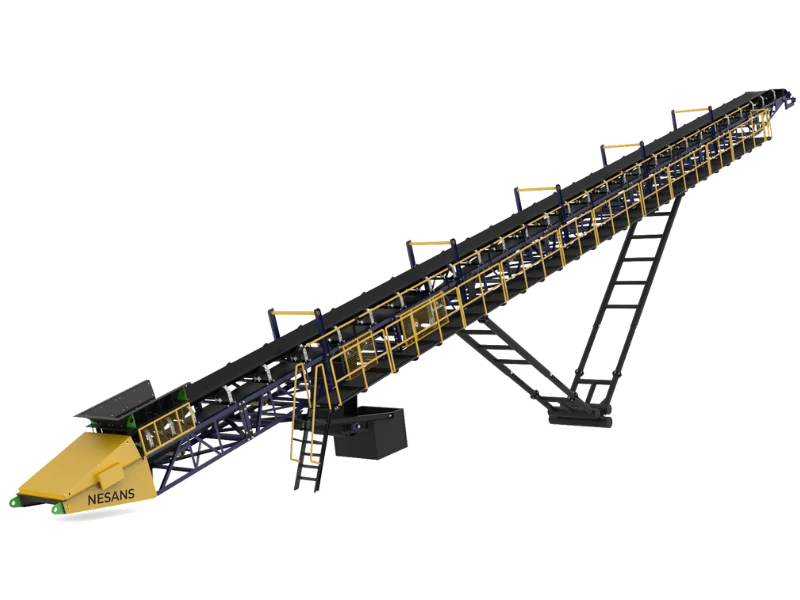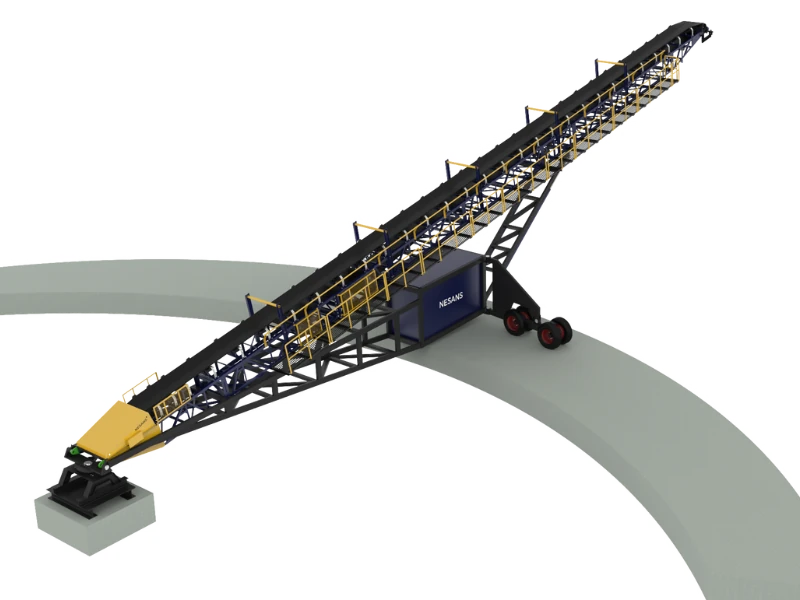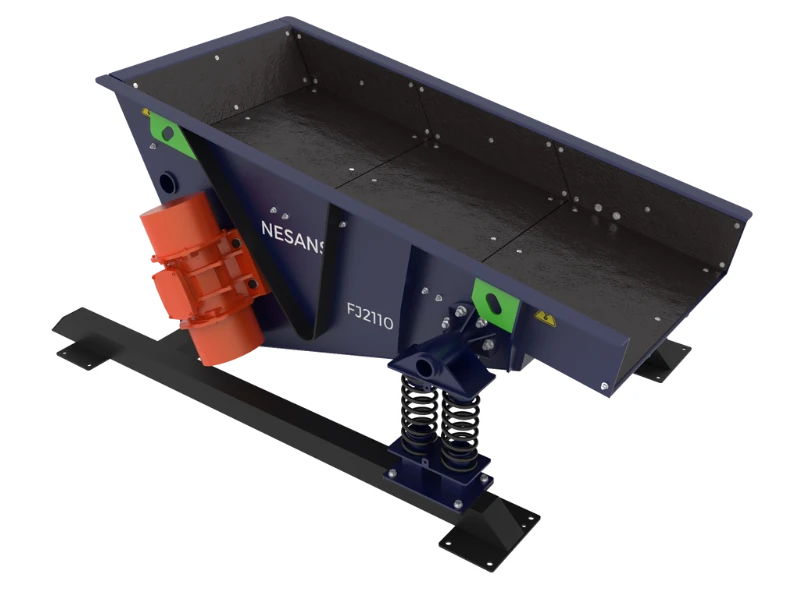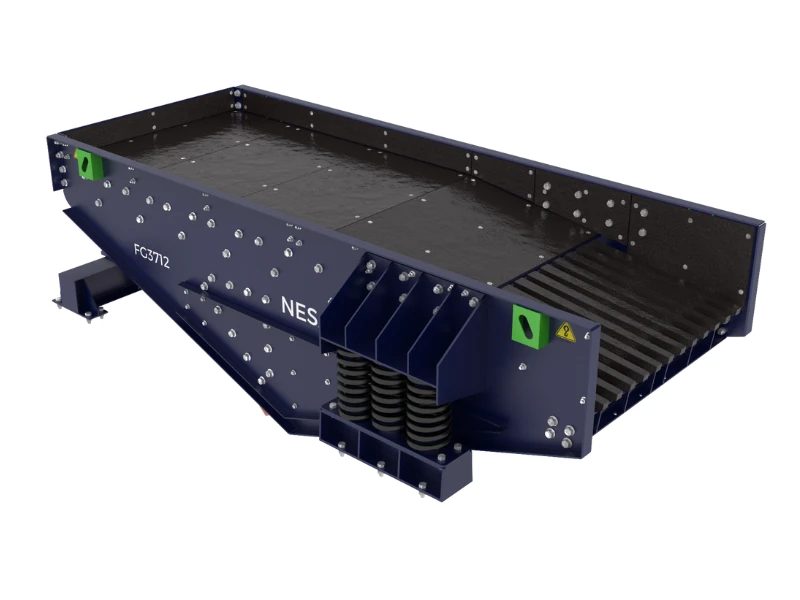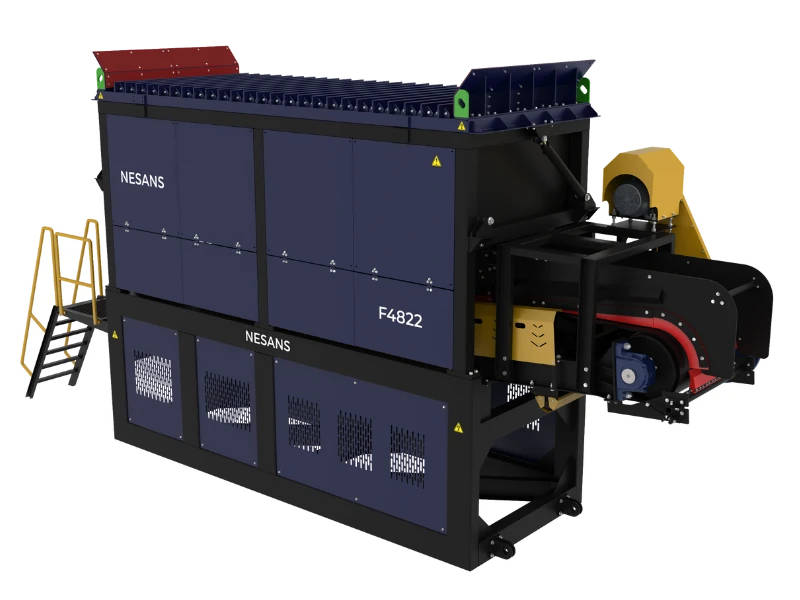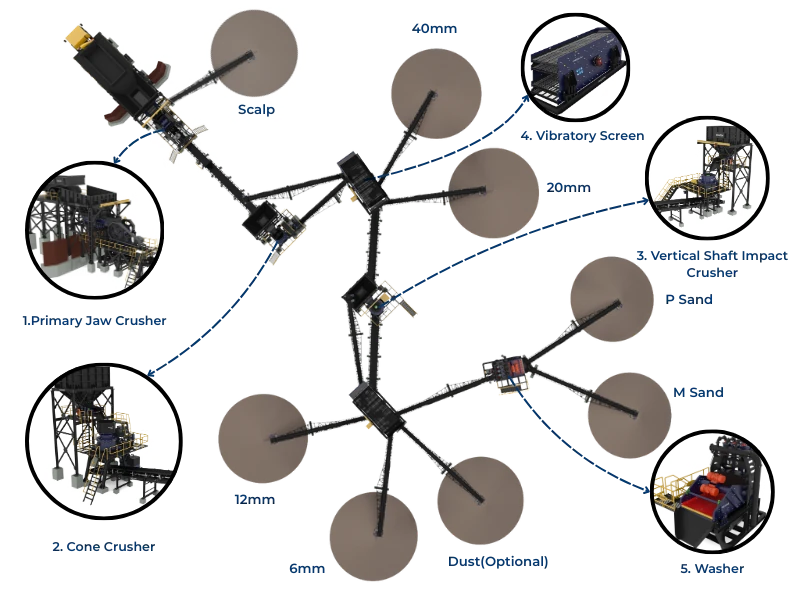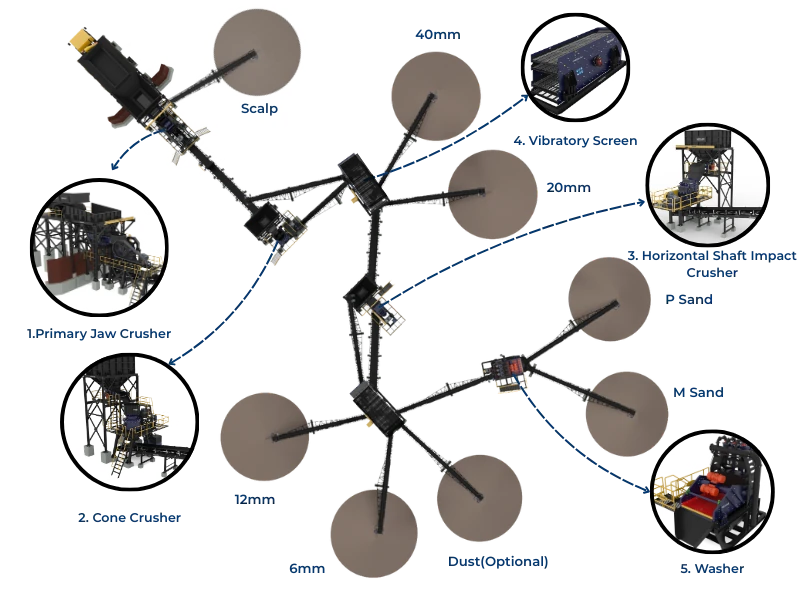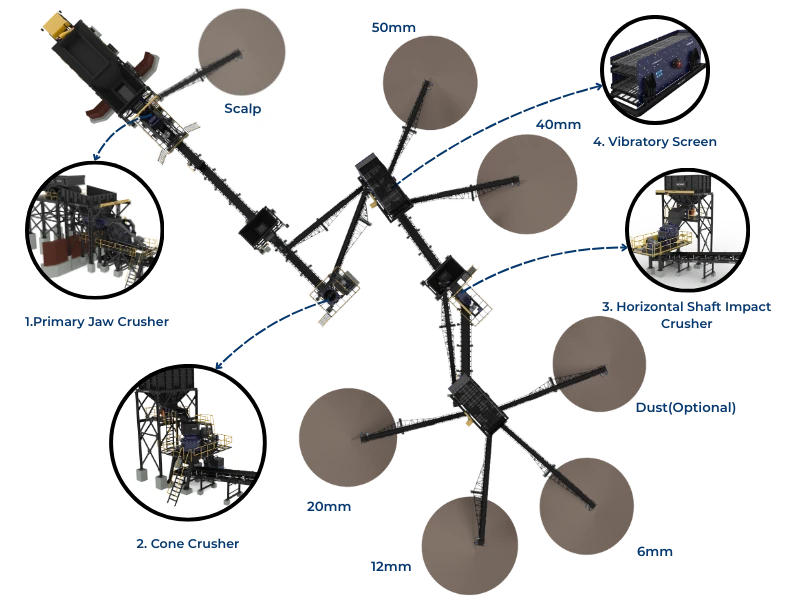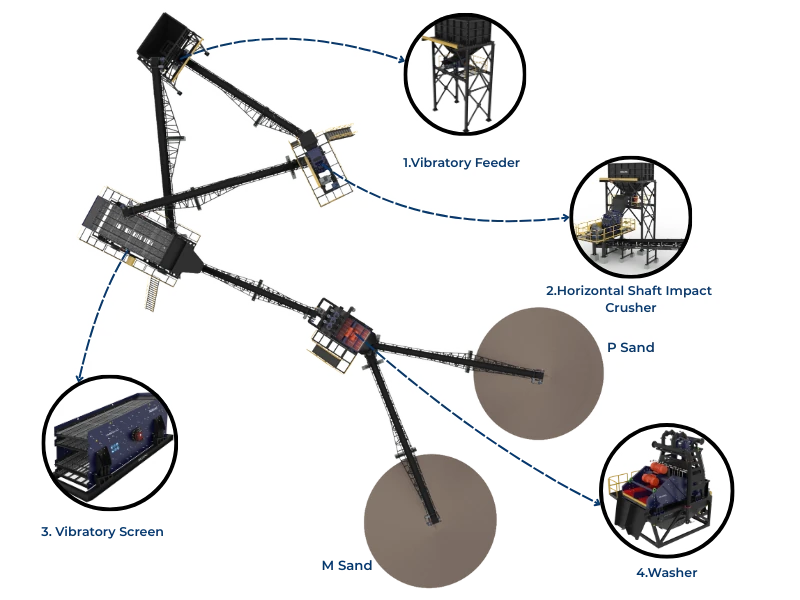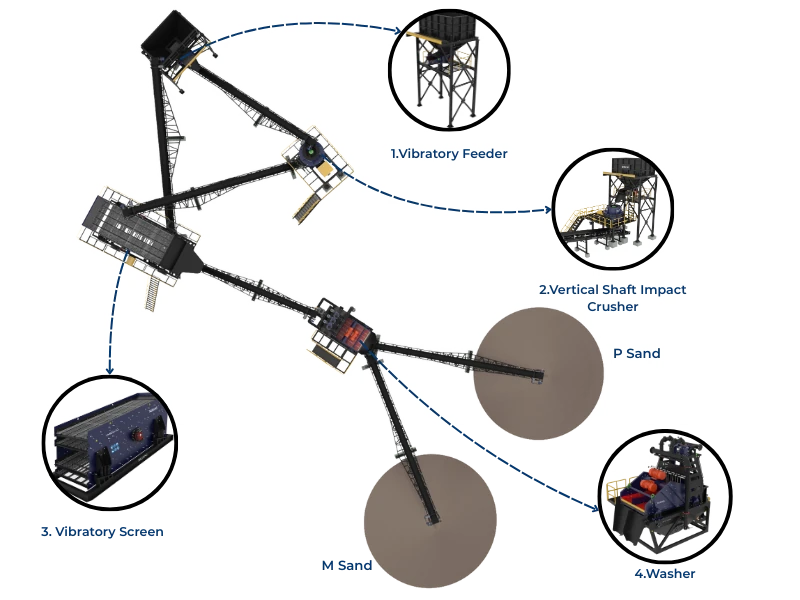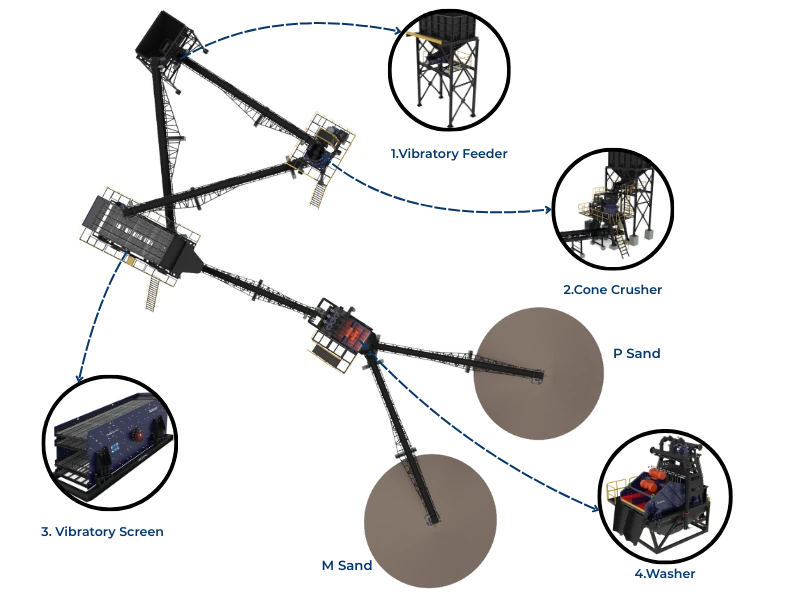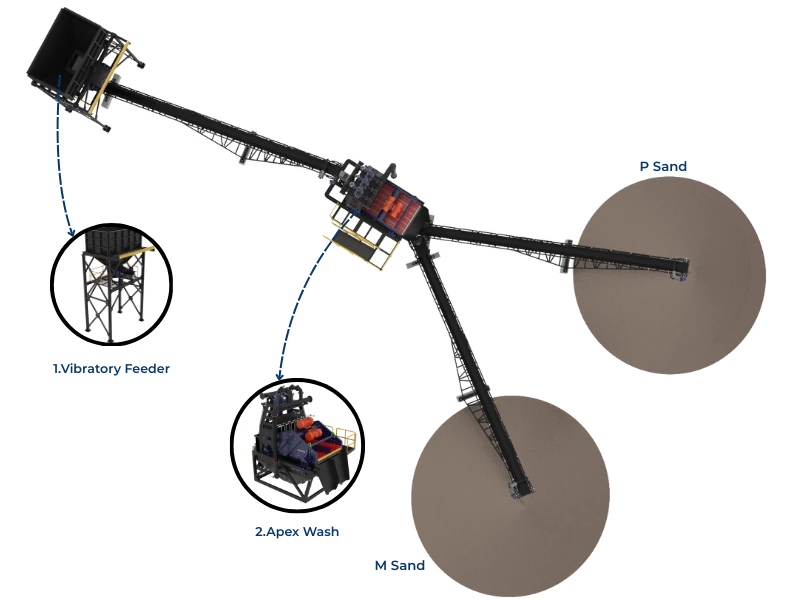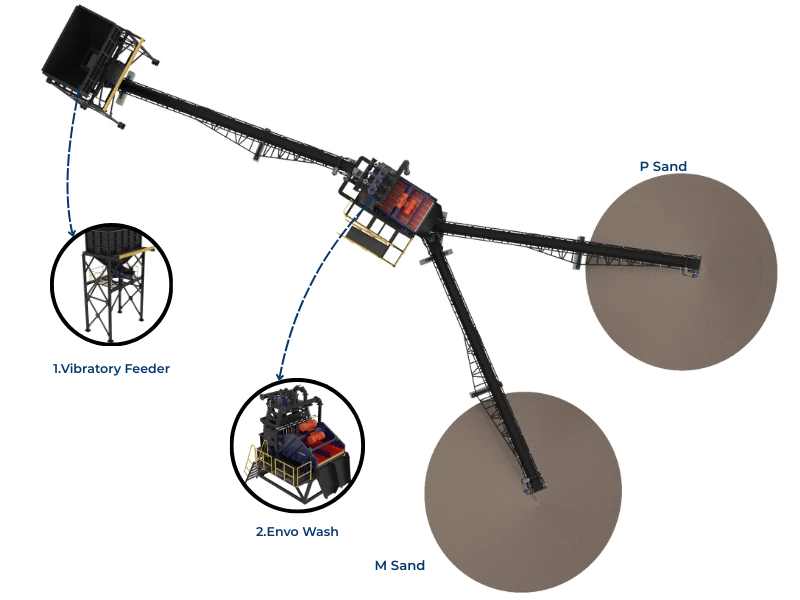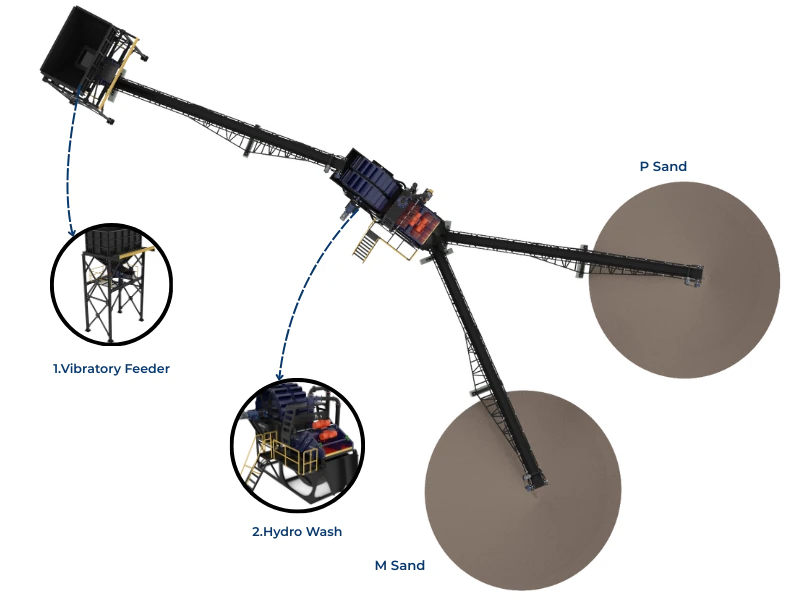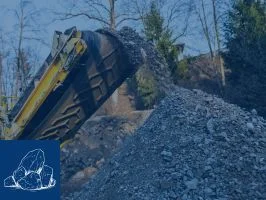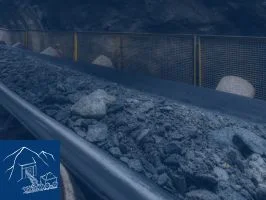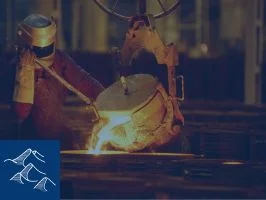Your cone crusher produces commercially acceptable 10-15mm aggregate at ₹850/ton, yet the same material shaped through VSI crushing commands ₹1,000-1,100/ton premium as manufactured sand for M30+ concrete. The difference isn't size—both meet gradation specifications—but particle shape. Conventional crushing creates 15-25% flaky and elongated particles that reduce concrete workability and strength. VSI crushing reshapes particles through high-velocity rock-on-rock impact, reducing flakiness to 8-12% (meeting IS 383 standards) while improving surface texture—adding ₹150-250/ton value that justifies VSI's ₹12-18/ton operating cost with ₹135-235/ton net margin improvement.
Aggregate particle shape fundamentally determines concrete performance—independent of aggregate size or rock type. Crushed stone from any source contains some percentage of flaky (thickness <0.6× average dimension) and elongated (length >1.8× average dimension) particles. These unfavorable shapes create multiple problems: 15-20% more void space requiring excess cement, poor particle packing reducing concrete strength, high surface area demanding more water, and preferential orientation under vibration causing anisotropic properties. Yet most aggregate producers ignore shape, focusing only on gradation compliance—leaving significant value unrealized.
This guide examines particle shape impact on concrete performance, VSI technology for shape improvement, economic analysis of shape optimization, and market positioning strategies that capture premium pricing for engineered manufactured sand meeting both gradation and shape specifications.
Understanding Particle Shape and Its Impact
Shape Classification and Measurement
Shape Dimensions:
- Flakiness Index (FI): Percentage (by mass) of particles with thickness <0.6× average dimension
- Elongation Index (EI): Percentage (by mass) of particles with length >1.8× average dimension
- Combined FI+EI: Total percentage of unfavorable shape particles
- Angularity: Sharpness of particle edges—quantified through visual comparison or automated image analysis
- Texture: Surface roughness affecting cement paste bond—measured by surface area per unit volume
IS 383 Shape Requirements:
- Flakiness index: Maximum 15% for coarse aggregate (>4.75mm)
- Elongation index: Maximum 15% for coarse aggregate
- Combined limit: Typically 25-30% maximum for critical applications
- Note: Many specifications test only flakiness, missing elongated particles
Impact on Concrete Properties
Workability and Water Demand:
- Flaky/elongated particles have 35-50% higher surface area per unit volume vs. cubical particles
- Higher surface area demands more cement paste to coat particles
- For constant slump, flaky aggregate requires 8-15% more mixing water
- Each 1% increase in water/cement ratio reduces 28-day strength approximately 3-5%
- Net effect: 20% flaky content reduces strength 4-7% compared to cubical aggregate
Packing Density and Void Content:
- Cubical particles achieve 58-63% packing density (void content 37-42%)
- Flaky/elongated particles achieve 45-52% packing density (void content 48-55%)
- Higher void content requires more cement paste to fill voids and provide workability
- Cement content increase: 20-35 kg/m³ for aggregate with 25% flaky content vs. 10% flaky
- Cost impact: ₹100-175/m³ additional cement cost (cement at ₹5,000/ton)
⚠️ Economic Impact on Concrete Producer: Ready-mix plant using aggregate with 25% flaky content (vs. 10% cubic material) must increase cement content 25 kg/m³ to achieve equivalent M30 strength. At 50,000 m³ annual production and ₹5,000/ton cement cost, this costs ₹62.5 lakhs annually in excess cement. Alternatively, purchasing VSI-shaped aggregate at ₹150/ton premium costs 50,000 m³ × 2.2 tons aggregate/m³ × ₹150/ton = ₹16.5 lakhs—saving ₹46 lakhs annually while improving quality consistency.
VSI Crushing Technology for Shape Improvement
VSI Operating Principles
Vertical Shaft Impact (VSI) crushers improve particle shape through high-velocity rock-on-rock or rock-on-anvil impact that fractures particles along natural weaknesses, breaking elongated and flaky pieces into more cubical shapes.
VSI Configuration Types:
1. Rock-on-Rock (Autogenous) VSI:
- Rotor accelerates feed material to 50-80 m/s (180-290 km/h)
- Particles ejected into crushing chamber lined with the aggregate itself
- Impact between high-velocity particles and stationary particle bed causes fracture
- Wear limited to rotor components—minimal liner cost
- Produces highest percentage of cubical particles (8-12% flaky typical)
- Suitable for softer to medium-hard rock (limestone, dolomite, some granites)
2. Rock-on-Anvil VSI:
- Rotor accelerates material to 45-70 m/s
- Particles impact fixed metal anvils surrounding rotor
- Direct impact with hard surface creates fracture
- Higher wear costs due to anvil replacement
- Produces slightly less cubical shape (10-15% flaky typical) but handles harder, more abrasive rock
- Suitable for hard rock (granite, basalt, quartzite)
Key Operating Parameters:
- Rotor Speed: 40-70 m/s tip speed determines impact energy—optimized for rock type
- Feed Rate: 80-120% of rated capacity for rock-on-rock (creates particle bed), 70-90% for rock-on-anvil
- Feed Size: Maximum 50mm for optimal shaping (larger particles more difficult to reshape)
- Recirculation Ratio: 20-40% of VSI discharge recirculated for additional shaping passes
Shape Improvement Performance
Typical Shape Improvement Results:
Input Material (Cone Crusher Product):
- Flakiness index: 18-25%
- Elongation index: 12-18%
- Combined FI+EI: 30-43%
- Angularity: Moderate (some rounded edges from tumbling)
VSI Output (Single Pass):
- Flakiness index: 10-15% (30-60% reduction)
- Elongation index: 8-12% (30-50% reduction)
- Combined FI+EI: 18-27% (35-45% reduction)
- Angularity: High (sharp edges, rough texture)
VSI Output (Double Pass with Recirculation):
- Flakiness index: 7-11% (55-70% reduction)
- Elongation index: 6-9% (50-65% reduction)
- Combined FI+EI: 13-20% (55-70% reduction)
- Angularity: Very high (fresh fracture surfaces, maximum roughness)
VSI Circuit Design and Integration
Circuit Configurations
Configuration 1: Tertiary Crushing Mode (Most Common):
- VSI positioned after secondary cone crusher
- Receives 10-40mm feed from cone crusher
- Screen separates VSI discharge into product sizes (0-4.75mm M-sand, 4.75-10mm, 10-20mm)
- Oversize (>20mm) recirculates to secondary cone crusher
- Throughput: 70-100 TPH for typical 200 kW VSI
Configuration 2: Closed-Circuit Shaping:
- VSI receives single size fraction requiring shape improvement (e.g., 10-20mm)
- Screen after VSI separates sized product from fines and oversize
- Oversize (flaky particles) recirculated to VSI for additional shaping
- Recirculation ratio: 30-50% (higher ratio improves shape but reduces throughput)
- Achieves best shape results but lower effective capacity
Capacity and Energy Considerations
VSI Throughput Factors:
- Rated capacity (TPH) applies to medium-hard rock in open-circuit mode
- Closed-circuit with recirculation reduces effective capacity 25-40%
- Very hard rock (granite, basalt) reduces capacity 20-30% vs. limestone
- Example: 200 kW VSI rated 120 TPH (limestone, open-circuit) achieves 70-85 TPH in closed-circuit granite shaping
Specific Energy Consumption:
- VSI shaping: 3.5-6.5 kWh/ton depending on rock hardness and shape improvement required
- Compare to conventional crushing: 1.5-2.5 kWh/ton
- Energy premium: ₹7-13/ton at ₹6.5/kWh industrial power rate
- Justified by ₹150-250/ton product value increase
Wear Cost Comparison:
- Rock-on-rock VSI: Rotor tips ₹80,000-120,000, life 3,000-6,000 hours (₹1.5-4/ton wear cost)
- Rock-on-anvil VSI: Anvils ₹150,000-250,000, life 2,000-4,000 hours (₹4-8/ton wear cost)
- Total VSI operating cost: Energy + wear + maintenance = ₹12-25/ton depending on rock type
Economic Analysis: VSI Investment and Returns
Case Study: 200 TPH Aggregate Plant Adding VSI
Baseline Production (Without VSI):
- Primary jaw + secondary cone crusher producing 10-20mm aggregate
- Shape properties: Flakiness 22%, elongation 15%, combined 37%
- Market price: ₹850/ton (commodity aggregate)
- Annual production: 1.44M tons (200 TPH × 7,200 hours/year)
- Revenue: ₹122.4 crores
VSI Investment:
- 200 kW VSI crusher: ₹55-75 lakhs
- Additional screening (separating M-sand and sized aggregate): ₹25-35 lakhs
- Recirculation conveying: ₹15-20 lakhs
- Installation and commissioning: ₹12-18 lakhs
- Total capital investment: ₹1.07-1.48 crores
VSI Production (With Shape Improvement):
- VSI processes 65% of production (130 TPH effective in closed-circuit mode)
- VSI product shape: Flakiness 9%, elongation 7%, combined 16% (meets IS 383 premium specs)
- Market price: ₹1,050/ton for premium manufactured sand (₹200/ton premium)
- Remaining 35% bypasses VSI, sells at ₹900/ton (₹50/ton premium for consistent grading)
Annual Revenue:
- VSI-shaped product: 0.936M tons × ₹1,050/ton = ₹98.3 crores
- Bypass product: 0.504M tons × ₹900/ton = ₹45.4 crores
- Total revenue: ₹143.7 crores (₹21.3 crores increase)
Additional Operating Costs:
- VSI energy: 0.936M tons × 4.5 kWh/ton × ₹6.5/kWh = ₹2.74 crores
- VSI wear and maintenance: 0.936M tons × ₹3/ton = ₹0.28 crores
- Additional screening and conveying: ₹0.45 crores
- Total additional cost: ₹3.47 crores
Net Annual Benefit: ₹21.3 crores revenue - ₹3.47 crores cost = ₹17.83 crores
Return on Investment: ₹17.83 crores / ₹1.28 crores investment = 13.9× annual return
Payback Period: 0.9 months (less than 1 month!)
Market Positioning and Premium Capture
Customer Segments for Premium Aggregate
Ready-Mix Concrete Plants (Primary Market):
- Value consistent shape for reduced cement consumption (₹50-100/m³ savings)
- Critical for high-strength mixes (M40+) where aggregate quality limits performance
- Premium pricing: ₹100-200/ton over commodity aggregate
- Volume potential: 40-60% of production in urban markets with active construction
Precast Concrete Manufacturers:
- Demand highest quality consistency—shape variation affects mold fill and finish quality
- Willing to pay ₹150-300/ton premium for certified shape compliance
- Smaller volume but stable long-term contracts
- Often require additional testing (micro-Deval for abrasion, freeze-thaw for durability)
Manufactured Sand (M-Sand) Market:
- Substitute for river sand in mortar and plaster applications
- VSI shaping essential for workability (hand mixing requires rounded particles)
- Market premium: ₹150-250/ton over conventional crushed sand
- Highest volume potential—replacing natural sand in residential construction
- Requires additional washing and classification for silt control
Conclusion
Aggregate particle shape controls concrete performance as significantly as gradation and rock type—yet receives far less attention in most operations. Flaky and elongated particles increase cement consumption 20-35 kg/m³ (costing concrete producers ₹100-175/m³) while reducing strength 8-15% compared to cubical particles.
VSI crushing technology reshapes particles through high-velocity impact, reducing flakiness from 20-25% (conventional crushing) to 8-12% (VSI-shaped), meeting IS 383 premium specifications. This transformation adds ₹150-250/ton market value—far exceeding VSI's ₹12-18/ton operating cost. For a 200 TPH plant, VSI investment of ₹1.1-1.5 crores generates ₹17-18 crores annual net benefit, achieving payback in less than 1 month.
The opportunity exists because most aggregate markets don't yet differentiate on shape—creating arbitrage for producers who invest in VSI technology and develop premium market relationships. As concrete quality requirements tighten and cement costs rise, shape-optimized manufactured sand will transition from specialty product to market standard—rewarding early adopters with sustained premium pricing and market share gains.

